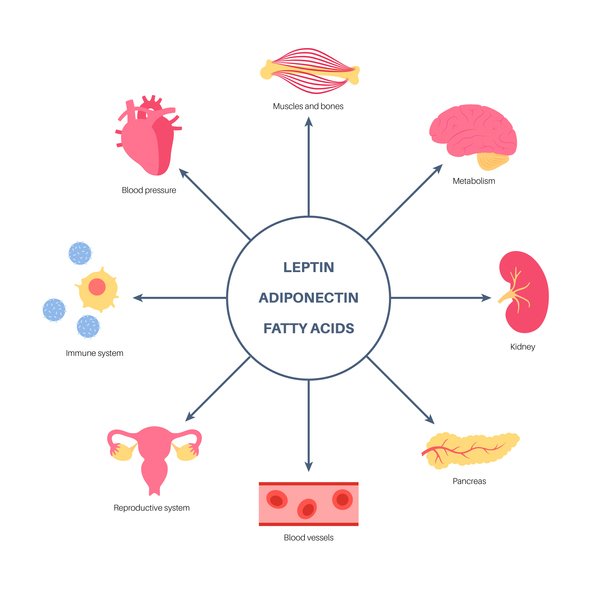Our Fat Cells Think We Are Carnivores!
As many of you know, I have been on the carnivore diet for over three years because it feels natural and works well for me. Click here for all my other posts on the carnivore diet. The carnivore diet is based on eating animal-based foods as much as possible. In some of my previous posts, I have listed supporting evidence that we tolerate animal-based foods well. Our highly acidic stomachs, longer small intestines, and lack of a cecum are a few patterns we share with carnivorous-leaning mammals. Additionally, fat cells have two patterns: one indicating herbivory and one carnivory. It turns out that humans have the carnivorous pattern.
Adipocytes
Fat cells are also known as adipocytes. The tissue they make up is called adipose tissue. The first published mention of adipose tissue is from 1837. The misconception that it only stored energy led to it being ignored for decades in the research literature. In the mid-1980s, researchers recognized that it produced proteins. It has been well studied since then. We now understand adipose tissue to have many functions, especially hormone production, and regulation.
Adipose Tissue Types
Traditionally, adipose tissue has been classified as white and brown fat. White adipose tissue is the most abundant and functions as energy storage, endocrine communication, and an insulin sensitivity moderator.
Brown Fat was originally thought to occur only in infants, but later research has shown that it is also present in adults. It serves to warm the body by burning energy without shivering. Two more types have recently been identified; beige and pink. Beige is a combination of brown and white. Pink is thought not to be present in humans.
Adipose Tissue Hormones
The hormones leptin, adiponectin, and resistin are released from adipose tissue. The dysregulation of any one of these hormones can contribute to systemic metabolic dysfunction, as well as to the pathogenesis of chronic metabolic diseases and some types of cancer. When adipose tissue becomes insulin resistant, it releases free fatty acids that aggregate in muscle and liver, where they are known as ectopic lipids. Ectopic lipids have been shown to induce insulin resistance at the adipocyte level and contribute to insulin-resistant diabetes. 1
Adipocyte size and Carnivores
In 1985 Pond and Mattacks authored a paper outlining the types of fat cells found in animals. They had numerous observations, but the one pertinent to this discussion is that the adipose tissue of mammals with a predominantly carnivorous diet contains 4.6 times as many adipocytes as that of herbivorous animals. The carnivorous-leaning animals had smaller cells, so they were no fattier than their mostly herbivorous counterparts. In other words, carnivores were found to have a higher number of smaller fat cells, and omnivores had a smaller number of larger fat cells. Humans are squarely in the carnivorous pattern of 4.6 times the number of adipocytes than herbivores. 2 Pond and Mattacks conclude: "These figures suggest that the energy metabolism of humans is adapted to a diet in which lipids and proteins, rather than carbohydrates, make a major contribution to the energy supply." 3 If you are interested in the other aspects of carnivore-leaning traits we possess, the paper entitled Are we carnivores? The implication for protein consumption by Miki Ben-Dor contains a list of them.
Conclusion
Most likely, you eat an omnivorous diet. Hopefully, it is devoid of processed carbohydrates and seed oils. Our evolutionary legacy informs us that we included animal-based foods, sometimes to the level of high-level carnivory, as found in the remains of Pleistocene humans in Europe. The researchers concluded this based on the number of specific nitrogen isotopes found in animal protein (δ15N). 4,5 Researchers have determined that our ancestors included large fatty animals and fish to achieve their high-level consumption of animals. If you choose to include animal-based nutrition in your diet, it should include fattier cuts and connective tissue like skin, cartilage, and organs. Whole shellfish, like oysters, are also packed with nutrition, as are egg yolks to mimic our ancestral diets.




